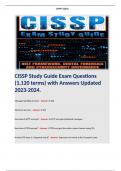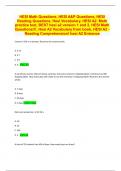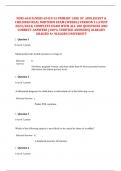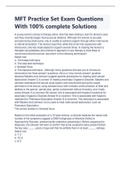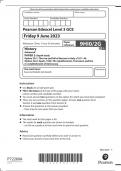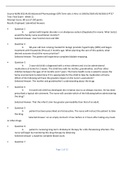Tentamen (uitwerkingen)
CISSP Study Guide Exam Questions (1,120 terms) with Answers Updated . Terms like; Message Handling Services - Answer: X.400 Directory Services - Answer: X.500 How does S-HTTP encrypt? - Answer: S-HTTP encrypts Individual messages.
- Vak
- Instelling
CISSP Study Guide Exam Questions (1,120 terms) with Answers Updated . Terms like; Message Handling Services - Answer: X.400 Directory Services - Answer: X.500 How does S-HTTP encrypt? - Answer: S-HTTP encrypts Individual messages.
[Meer zien]
